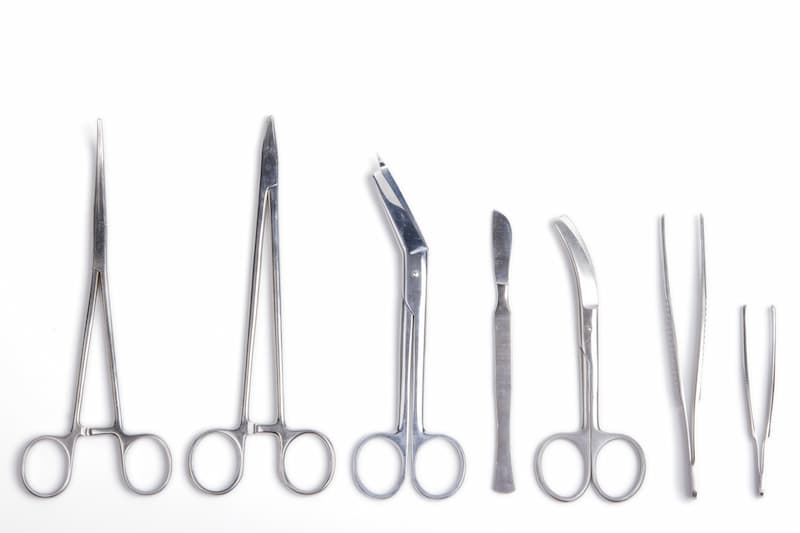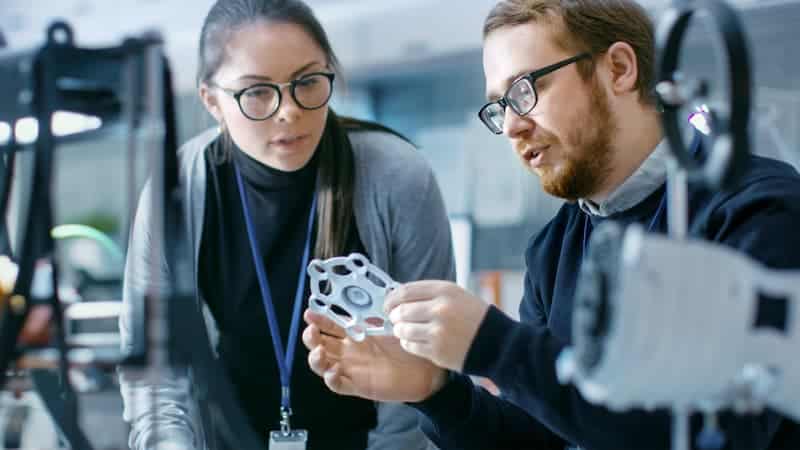The Essential Springs & Stamping in Medicine
As medical advancements are conceived, more devices, tools and high-tech equipment are made that ensure that we all enjoy a superior quality of life. Springs are used in almost every application in medicine. These essential components fulfil vital roles within these machines and must be reliable so that the doctors and nurses can perform their work uninterrupted.
Many life-saving treatments are connected to the inclusion of springs and stampings in medical tools. We at European Springs frequently find ourselves commissioned to manufacture a wide range of high-quality components for use in the healthcare industry.

Medical Springs
The main three spring designs used for medical applications are compression, tension and torsion spring. Compression springs are used in devices that require squeezing action, such as a surgical stapler. Tension springs hold objects together, such as stretches and surgical lights. Torsion springs assist with rotational movement. For example, a dental x-ray unit will have a torsion spring inside it to help point it at the right angle.
Biopsy forceps are a commonplace tool in medicine. These specific forceps are employed to remove small samples of tissue for examination. For example, a surgeon may need to remove a piece of liver tissue to examine it for anything unusual or abnormal growth. The small spring inside makes these forceps particularly good at their role. Other forceps create the possibility of mishandling or human error. In contrast, the pressure provided by the spring in the biopsy forceps ensures that the tissue can be removed effectively and safely.
A far more prominent example of springs assisting medical personnel involves the application of a coil tension spring. Tension springs are designed to resist stretching, providing a tension that pulls attached components back together when moved apart. Large coil tension springs are used in stretchers and posable surgical lights, with small tension springs installed in various other medical devices.
Springs are used in dentistry to help people with their braces. These springs are conventionally made of nickel and titanium alloy for their corrosion resistance and increased hygiene. These springs’ role is continuously exerting a minor force over long periods. This is to have the desired effect of moving the teeth successfully without causing additional problems. Therefore, the manufacture of springs for braces has to be very precise. If a stiff material is chosen, that inflexibility will lead to the force application of the spring reducing to nothing much faster than intended. More flexible materials will be able to compensate and provide the necessary tension for the desired time.
Medical Pressings and Stampings
Medical stampings are an essential part of the components we provide for the healthcare industry. Pressing flat sheet metal into custom shapes revolutionised the medical sector and opened a whole new world of possibilities for medical care.
Medicine has embraced the adaptability of this process for its medical devices, and they have embraced the possibilities that bespoke stampings provide. Variable sizes are available without sacrificing the lightweight nature, and durable materials are usually chosen for medical applications. Many complex shapes must be made, often in petite sizes, but despite these complications, they are still required to meet the required tolerance specifications.
Implantable Medical Devices
All implantable medical devices have the same challenge, biocompatibility. In addition, these devices are usually life-saving and must be left in the body permanently without causing additional complications for the patient, which demands that they are hygienically suitable. Orthopaedics and cardiovascular are two areas of medicine that use implantable devices.
Artificial pacemakers send electrical charges to a patient’s heart if it’s beating irregularly or suffering from Tachycardia (fast heartbeat) or Bradycardia (slow heartbeat). Springs are used inside to ensure that the miniature electric leads that send these charges to the heart are never disconnected, called active fixation. Additionally, the exterior must be covered with a medical stamping sufficient to not react to the body’s internal chemicals; this is why titanium and stainless steel are usually chosen.
Both titanium and stainless steel are materials that are corrosion resistant, which makes them fantastic for implantable devices. In addition, titanium has the added benefit of connecting with the human bone without reacting negatively (known as Osseointegration). Titanium is also used as a material for surgical tools such as forceps, drills and retractors. Stainless steel provides similar results thanks to its high resistance and durability.
Gas Spring Applications in Medicine
As the leading UK spring manufacturer, we know that the gas spring is one of the most sought-after components. Gas springs are installed in hospital or physiotherapy beds to allow flexibility in the bed position and provide increased comfort for the patient. You will also find them as a part of flow control valves or pressure valve regulators in medical gas cylinders. Our gas springs have also been installed into surgical applications, such as patient trolleys and robotic-assisted surgery.
The versatility of the gas spring provides a wealth of opportunities for medical applications, and their quality ensures that they operate sufficiently for the products’ entire lifetime.
You can read more about the specific high-quality springs we supply in our spring catalogue. Additionally, if you require a unique component for your next application, consider requesting a bespoke design. Finally, you can contact us directly online; one of our experts will be happy to help you find what you need.


